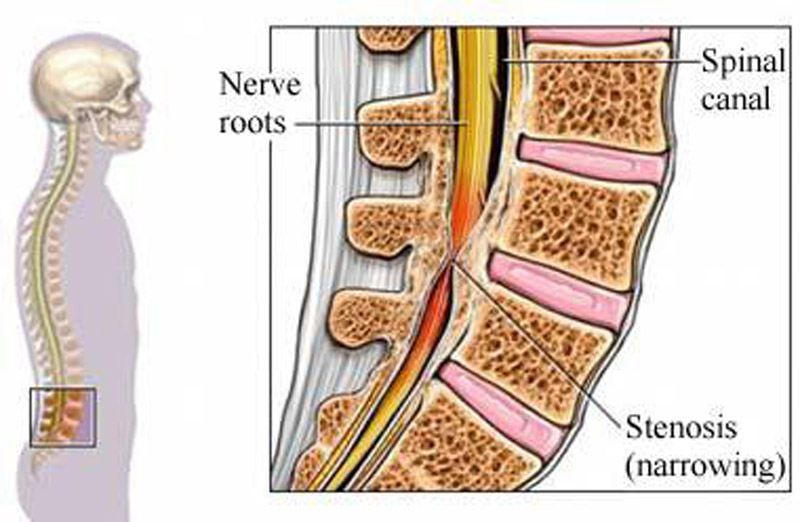A Non-surgical Approach to the Management of Lumbar Spinal Stenosis: A Prospective Observational Cohort Study
SOURCE: BMC Musculoskelet Disord. 2006 (Feb 23); 7: 16
Donald R Murphy, Eric L Hurwitz,
Amy A Gregory, and Ronald Clary
Rhode Island Spine Center,
Pawtucket, RI 02860, USA.
BACKGROUND: While it is widely held that non-surgical management should be the first line of approach in patients with lumbar spinal stenosis (LSS), little is known about the efficacy of non-surgical treatments for this condition. Data are needed to determine the most efficacious and safe non-surgical treatment options for patients with LSS. The purpose of this paper is to describe the clinical outcomes of a novel approach to patients with LSS that focuses on distraction manipulation (DM) and neural mobilization (NM).
METHODS: This is a prospective consecutive case series with long term follow up (FU) of fifty-seven consecutive patients who were diagnosed with lumbar spinal stenosis (LSS). Two were excluded because of absence of baseline data or failure to remain in treatment to FU. Disability was measured using the Roland Morris Disability Questionnaire (RM) and pain intensity was measured using the Three Level Numerical Rating Scale (NRS). Patients were also asked to rate their perceived percentage improvement.
RESULTS: The mean patient-rated percentage improvement from baseline to the end to treatment was 65.1%. The mean improvement in disability from baseline to the end of treatment was 5.1 points. This was considered to be clinically meaningful. Clinically meaningful improvement in disability from baseline to the end of treatment was seen in 66.7% of patients. The mean improvement in “on average” pain intensity was 1.6 points. This did not reach the threshold for clinical meaningfulness. The mean improvement in “at worst” pain was 3.1 points. This was considered to be clinically meaningful. The mean duration of FU was 16.5 months. The mean patient-rated percentage improvement from baseline to long term FU was 75.6%. The mean improvement in disability was 5.2 points. This was considered to be clinically meaningful. Clinically meaningful improvement in disability was seen in 73.2% of patients. The mean improvement in “on average” pain intensity from baseline to long term FU was 3.0 points. This was considered to be clinically meaningful. The mean improvement in “at worst” pain was 4.2 points. This was considered to be clinically meaningful. Only two patients went on to require surgery. No major complications to treatment were noted.
There are more articles like this @ our:
CONCLUSION: A treatment approach focusing on distraction manipulation (DM) and neural mobilization (NM) may be useful in bringing about clinically meaningful improvement in disability in patients with lumbar spinal stenosis (LSS).
From the FULL TEXT Article:
Background
Lumbar spinal stenosis (LSS) is a common and often disabling disorder that generally occurs in the sixth or seventh decade of life [1], although it can uncommonly occur in younger individuals. [2] The incidence of this condition has been reported to be 8–11% [3], with a slight preponderance in women. [1] LSS can lead to low back and leg pain, most typically via encroachment on the central canal, lateral recess, or lateral canal. The source of the encroachment is typically vertebral body osteophytes, hypertrophy of the ligamentum flavum or zygapophyseal joint, or a combination of these. [1] The posterior longitudinal ligament may be involved in some individuals. [4] The development of these degenerative changes is often accompanied by restriction of segmental mobility. [1]
Read the rest of this Full Text article now!


Leave A Comment